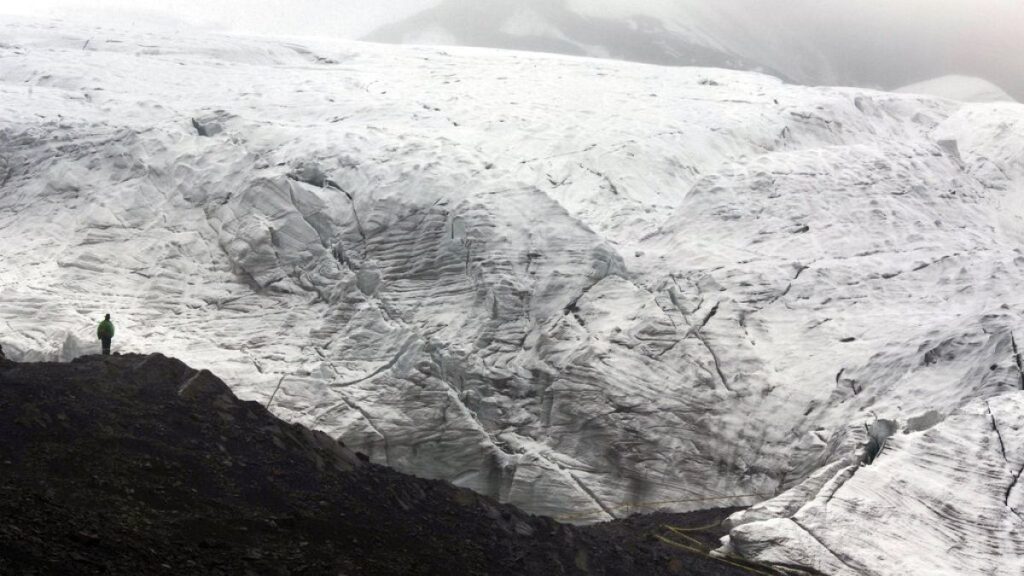Glaciers in Salzburg, Austria, are facing rapid shrinkage and are at risk of disappearing within the next 10 to 15 years due to the effects of climate change. Researcher Bernhard Zagel has expressed concern over the drastic loss of mass and height in these glaciers, with some areas already having lost half of their ice over the past 25 years. Despite heavy snowfall in the Austrian Tauern mountains earlier in the year, the glaciers have continued to experience significant melting at altitudes of 3000 meters, a phenomenon Zagel attributes to the greenhouse effect. He emphasizes the urgent need to address this issue before it is too late.
Currently, glacier researchers and hydrologists are conducting surveys on the glaciers in Salzburg, although detailed data and measurement results are still pending. Zagel points out that even with eight to nine hours of sunshine, the glaciers can lose around ten centimeters in height, which equates to a loss of ten meters of ice per year. He underscores the magnitude of this loss and highlights the challenge of replenishing the ice with fresh snow. The Stubacher Sonnblickkees glacier, located at an altitude of 2,700 meters, has lost 45 million cubic meters of ice in the past 25 years, representing half of its total mass. Zagel predicts that in a decade, there may no longer be visible glaciers in the area.
The impact of glacier loss extends beyond just the disappearance of these natural formations; it also has significant implications for the environment and water resources. Glacial meltwater contributes to the region’s hydrology, supporting ecosystems, agriculture, and communities downstream. The reduction in glacier volume can lead to changes in streamflow patterns, water availability, and the risk of natural disasters such as floods and landslides. By studying the glaciers in Salzburg and monitoring their changes, researchers are gaining valuable insights into the effects of climate change on these vital water sources.
Zagel’s observations and warnings highlight the urgent need for action to address the impacts of climate change on glaciers. He emphasizes the role of the greenhouse effect in driving the accelerated melting of glaciers in the Austrian Alps, noting the rapid changes in ice cover witnessed over the past decades. Despite efforts to mitigate the effects of climate change, such as reducing greenhouse gas emissions and promoting sustainable practices, the continued loss of glaciers in Salzburg serves as a stark reminder of the urgent need for global climate action. Governments, organizations, and individuals must work together to protect these vital ecosystems and address the root causes of glacier shrinkage before it is too late.
As glaciers in Salzburg continue to shrink at an alarming rate, researchers are racing against time to document these changes and understand their implications. The ongoing surveys and measurements being conducted on the glaciers will provide crucial data for monitoring their health and predicting their future. By studying the patterns of glacier loss and analyzing the underlying factors driving this phenomenon, scientists can inform decision-making processes and develop strategies for adapting to a changing climate. Through collaboration and scientific research, there is hope that the glaciers in Salzburg can be preserved and protected for future generations to appreciate and enjoy.
In conclusion, the disappearance of glaciers in Salzburg, Austria, within the next 10 to 15 years is a stark reality that underscores the urgent need to address climate change and its impacts. Bernhard Zagel’s research and observations highlight the rapid loss of ice mass and height in these glaciers, with some areas having already lost half of their ice over the past few decades. The implications of glacier loss extend beyond just the visual disappearance of these natural formations, affecting water resources, ecosystems, and communities downstream. By studying and monitoring these glaciers, researchers are gaining valuable insights into the effects of climate change on water sources and the environment. Action must be taken to protect these vital ecosystems and address the root causes of glacier shrinkage before it is too late.


